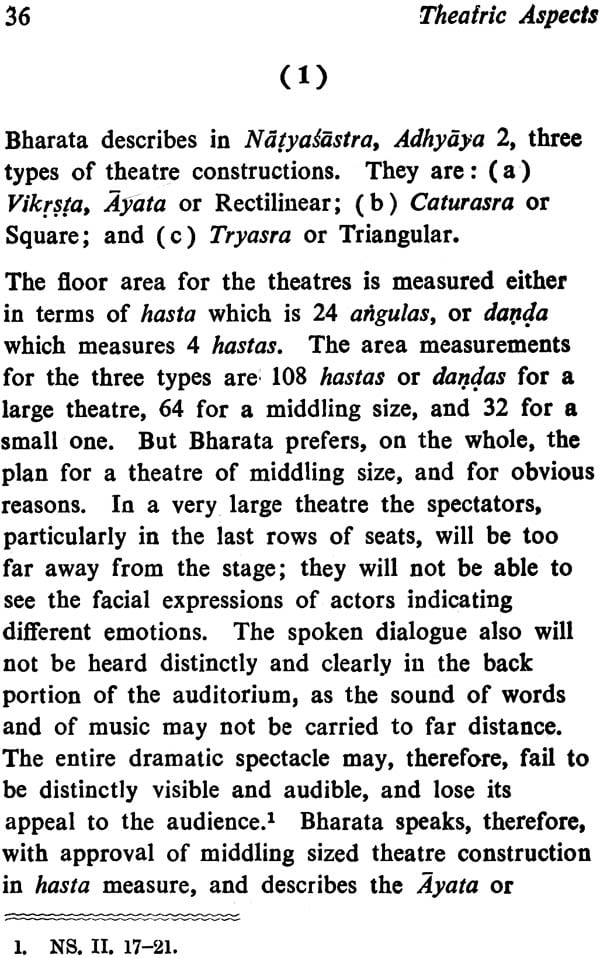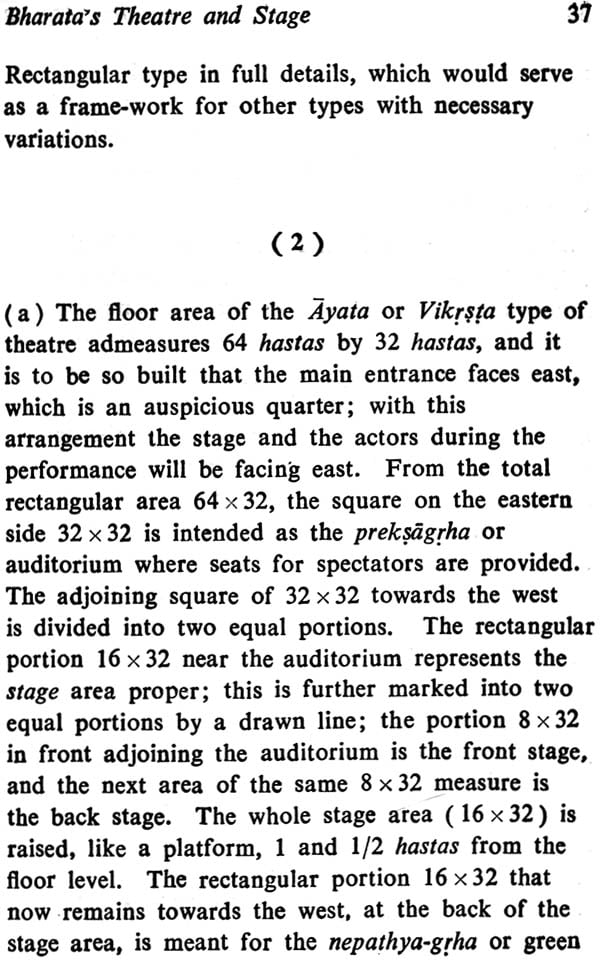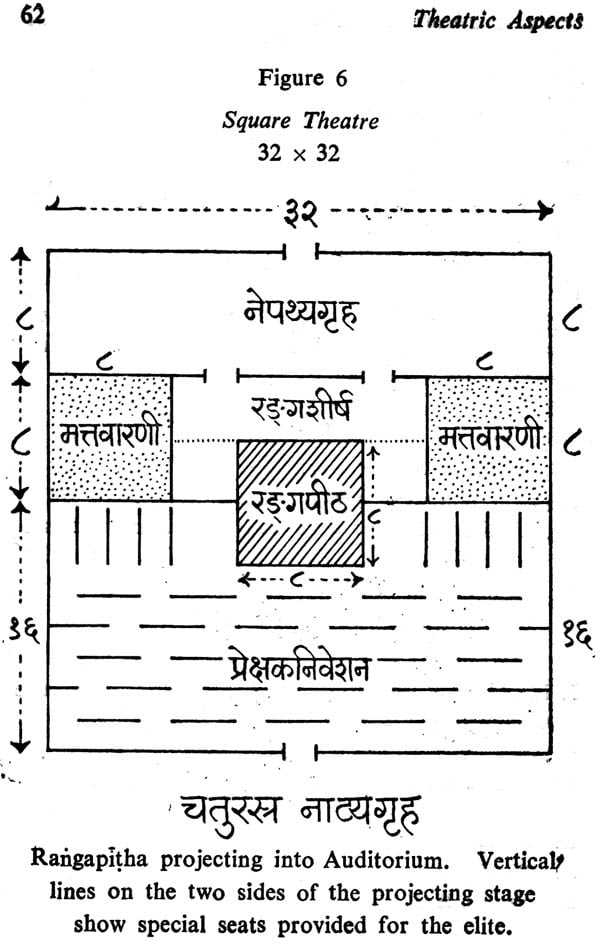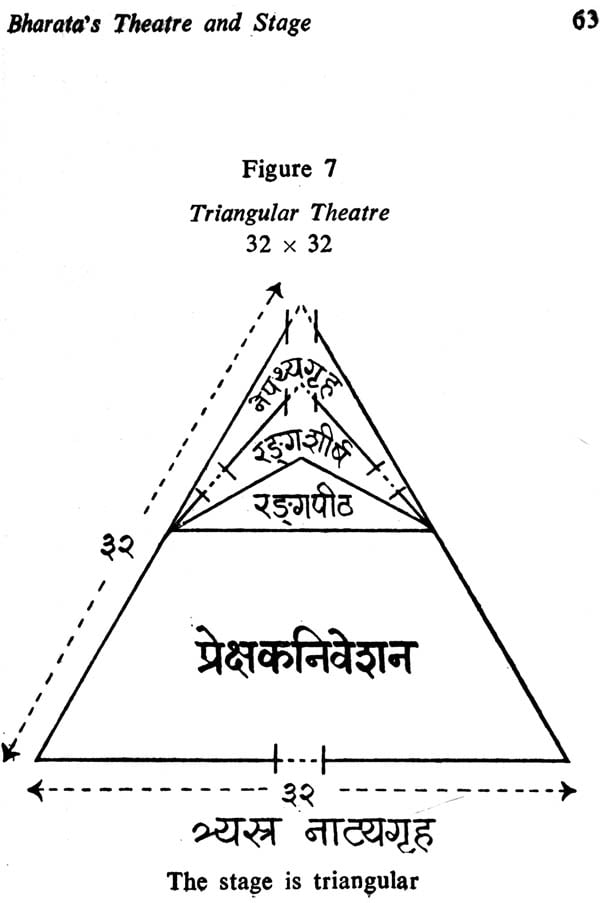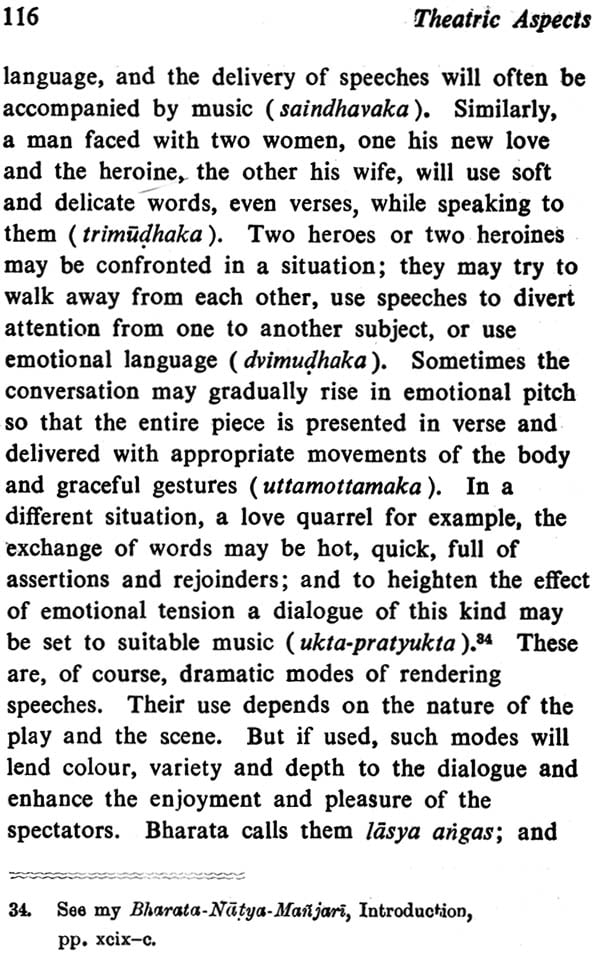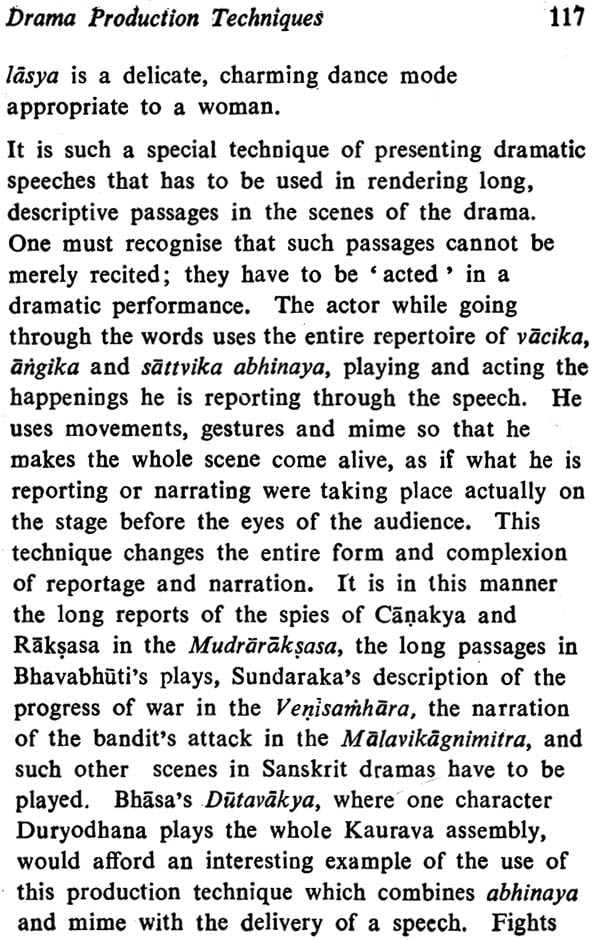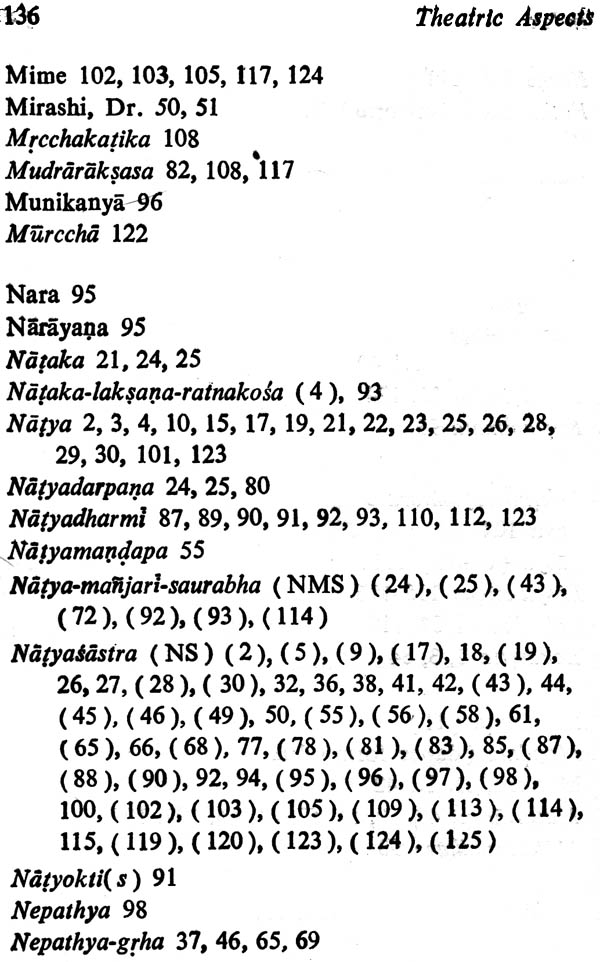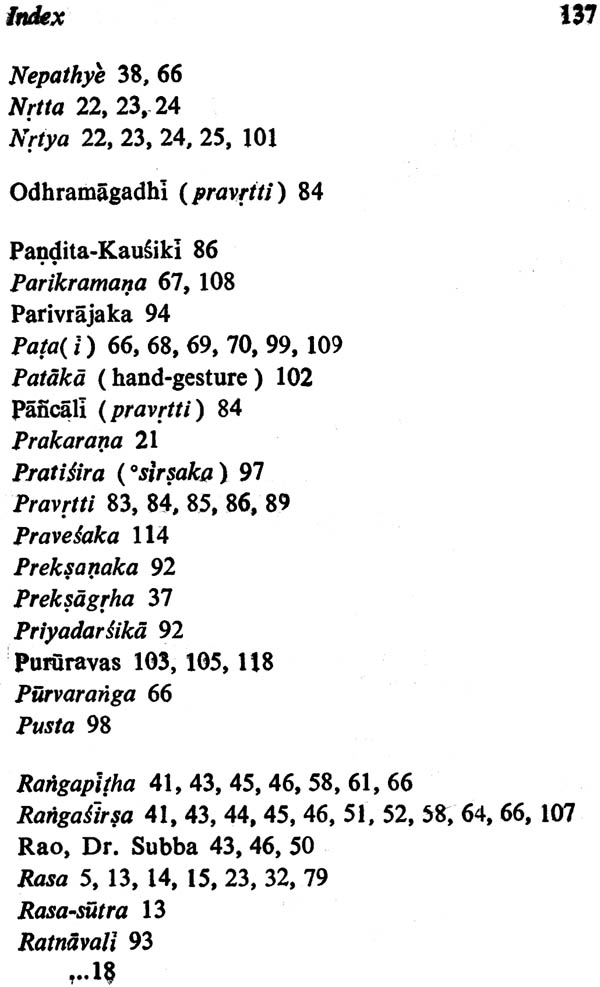
Theatric Aspects of Sanskrit Drama (Rare Book)
Book Specification
| Item Code: | NAC455 |
| Author: | G.K. Bhat |
| Publisher: | Bhandarkar Oriental Research Institute, Pune |
| Language: | English |
| Edition: | 1983 |
| Pages: | 151 |
| Cover: | Hardcover |
| Other Details | 8.7 Inch X 5.7 Inch |
| Weight | 280 gm |
Book Description
It is highly gratifying that Professor Bhat has assiduously sustained his critical interest in the theory and practice of Sanskrit drama. Drama is sometimes defined as poetry in action - with special emphasis on the words ‘in action’. This explains why the theatrical aspect of drama should be found as engrossing as - or perhaps more engrossing than - the literary aspect. Indeed, I remember that, a few years ago, an exclusive and independent ‘International Conference on Sanskrit Drama in Performance’ was organized at the University of Hawaii. The papers presented at that conference, however, covered a wide spectrum — from the theatre of Bharata’s Natyasastra to the various forms of regional theatre now current in India.
It has been pointed out that, with all the peoples of the earth, the theatre was nourished from two sources — from the element of cult and from the element of game, the latter element generating the mimus. When these two factors cross and meet, the spark of the theatre is kindled. The ceremonial and magico-religious origins of the drama are closely interwoven with those activities of man which derive from his being homo ludens. It would be rewarding to examine these observations in the light of the substantial material so ably and systematically brought together by Professor Bhat.
I have referred above to Professor Bhat’s critical interest in the theory and practice of drama. In the context of the present book, I should like to add that Professor Bhat also evinces a creative interest in the subject; for, I know how he had personally and actively supervised the construction of a stage according to Bharata’s Nã.tya4astra, with Rangasirsa and two Natyasastra, for the performance of his own Marathi adaptation of the Mudraraksasa. I do not think that there can be a stronger recommendation than this for this small but sound treatise.
I was invited by the authorities of the University of Bombay to deliver lectures on an Indological subject under the ‘Principal Dr. H. R. Karnik Indological Lectureship Endowment’, for 1979. The lectures were delivered at the University Club House, B Road, Church gate, Bombay, on January 21, 22 and 23. 1980. They are now offered here fully expanded into book form, complete with notes and sketches.
I chose my subject in consultation with the Head of the University Department of Sanskrit. I had already discussed some of the aspects of this subject quite elaborately in my Bharata-Natya-Manjari and its sequel, Natya-Manjari-Saurabha, both dealing with the theory of drama in Sanskrit. I was also required to cover parts of it in my earlier book, Sanskrit Drama: A Perspective on Theory and Practice. The topics in the present book are the same; and a reader of the three books may find some identical material here. It is inevitable; for, we are deating with sastric, theoretical material, and we cannot alter it, or even re-word it, in order to satisfy somebody’s desire or expectation for novelty. But what I have done here is to bring the relevant material together and under a single perspective of Theatric Aspects of Sanskrit Drama. I have endeavoured to relate it to dramatic practice, illustrating the theoretical concepts and precepts from the classical plays. I sincerely hope that the general reader and all those who are interested in theatre movement and drama production will find this effort useful and helpful.
I wish to thank the authorities of the University for giving me an opportunity to speak to an audience of university teachers, students and interested public. I thank the members of the University Department of Sanskrit also for attending to my personal convenience and for giving me the facilities I needed. My listeners have placed we under a debt of gratitude by giving me a very intelligent and lively response.
Let me also thank my senior colleague and esteemed friend Dr. Karnik whose generosity has made this lectureship possible. I am happy that I could participate in the scheme endowed by him, and that he and Mrs. Karnik could attend all the three lectures.
It is, however, exceedingly sad that Dr. Karnik is not with us now to see the lectures published in a book- form. My regret is both academic and personal.
| Foreword | iii | |
| Preface | v | |
| Acknowledgements | vii | |
| 1. | Concept of Natya | 1-33 |
| 1. Bharata’s statements | 2 | |
| 2. Lokavrtta | 3 | |
| 3. Anukarana | 4 | |
| 4. Bhava-anukirtana | 10 | |
| 5. Abhinaya | 15 | |
| 6. Natya and Rupaka | 19 | |
| 7. Natya, Nrtya, Nrtta | 21 | |
| 8. Literary aspect of drama | 26 | |
| 9. Western and Oriental views | 30 | |
| 2. | Bharata’s Theatre and Stage | 35-72 |
| 1. Three kinds of theatre Constructions: Measurements | 36 | |
| 2. Ayata or Rectilinear theatre | 37 | |
| Floor plan | 37-38 | |
| Doors | 38 | |
| Rangasirsa, Rangapitha | 41-49 | |
| Mattavarani | 49-54 | |
| Dvibhumi | 55 | |
| Seating arrangement | 56-57 | |
| 3. Caturasra and Tryasra theatres | 58-61 | |
| 4. Building and Decoration | 64 | |
| 5. Yavanika, Pata-Pati | 65-71 | |
| 6. Later developments: Vrtta theatre | 71 | |
| 3. | Drama Production Techniques | 73-126 |
| 1. Theatre and Production Techinique | 75 | |
| 2. Dramatic Patterns: Vrtti | 77-83 | |
| 3. Pravrtti | 83-87 | |
| Abhinaya: Lokadharmi, Natyadharmi | 87-93 | |
| 5. Aharya-nepathyaja abhinaya make-up, costumes, jewelry, decoration | 94 | |
| Pratisira | 97 | |
| Four kinds of nepathya | 98 | |
| 6. Angika abhinaya | ||
| Movements of major and minor limbs | 100 | |
| Sthana or poses | 103 | |
| Dance movements | 104 | |
| Kaksya or zonal divisions | 105 | |
| Conventions | 107 | |
| 7. Vacika abhinaya | ||
| kaku, voice intonation | 110 | |
| svagata, karne | 110 | |
| Akasabhasita | 111-112 | |
| Janantika, Apavaritaka | 112-113 | |
| Svapnayita | 113 | |
| Narrative speeches | 113-114-117 | |
| Lasya-angas | 115-116 | |
| 8. Sattvika abhinaya | ||
| Meaning of Sattva | 119 | |
| Meaning of Sattva | 120-121 | |
| Conventional element: murccha | 122 | |
| 9. Preference for art technique | 123-1124 | |
| Factors of successful production | 125 | |
| Glossary | 127 | |
| Index | 131 |
